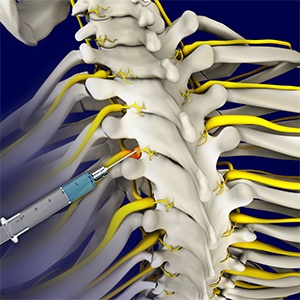Root Blocks

Root blocks are minimally invasive injections designed to deliver medication directly around a specific spinal nerve root that is causing pain, numbness, or tingling. By targeting the inflamed or compressed nerve, these injections can provide rapid symptom relief, help identify the source of pain, and complement conservative therapies like physical therapy or medications. They are especially effective for conditions such as sciatica, cervical radiculopathy, or other nerve-related spine pain.
Performed under fluoroscopic or CT guidance, root blocks ensure precise needle placement. After administering local anesthesia, a thin needle is advanced to the affected nerve root, where a mixture of corticosteroid and anesthetic is injected to reduce inflammation and provide immediate pain relief. Typically done as an outpatient procedure lasting 15–30 minutes, patients often notice improvement within days. Multiple injections may be administered if necessary, spaced at safe intervals. Indications include radicular pain from herniated discs, foraminal stenosis, nerve inflammation, or post-surgical scar tissue. Benefits include rapid pain relief, decreased reliance on oral medications, improved mobility, and, when combined with physical therapy, may help avoid surgery or enhance post-operative recovery.

Root blocks are a safe, minimally invasive option for managing nerve root pain. By providing targeted relief and supporting rehabilitation efforts, they play a key role in comprehensive spine care. Patients typically tolerate the procedure well, and serious complications are rare when performed by experienced specialists.